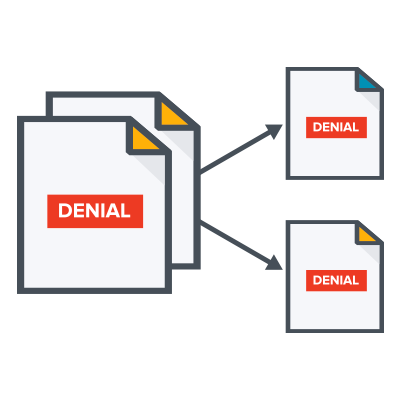- Solutions
Healthcare
- Resources
Why run this play?
Even though timely filing denials are some of the easiest to avoid, at many providers, the number of them are rapidly trending upward. This is because process failures can make the deadlines hard to see until it’s too late. This play will show you how to create the “before deadline” visibility you need to prevent timely filing denials in the future. Once implemented, you’ll quickly see timely filing write-offs trending down, and net revenue trending up.
Background
Each denial has an associated cost: staff time spent researching the claim and filing an appeal or the hard cost of preventable write-offs. But they often have a small number of avoidable root causes: claims issues, HIM coding, documentation delays, or an account or claim check. Filing limits also change with new managed care contracts.
When you better understand the “where, why, and when” timely filing denials typically occur, systemic resolution and timely filing prevention improves. The key is to publish your timely filing requirements, by payer, for billers, follow-up representatives, coders, and other applicable staff to ensure deadlines are always met.
Take Action
- Locate your timely filing limits, by payer. We recommend working with with your Revenue Cycle Systems team to add timely filing requirements to your organization’s Payer Contract Matrix.
- If your organization doesn’t have an existing timely filing table by payer, we recommend that you review your denials for timely filing by original insurance plan. Calculate the earliest age by discharge date that each claim was denied for timely filing. Use that as a proxy.
- Create a report that shows all open, billed accounts. Create a calculated field that = discharge date + the timely filing limit (by original insurance plan). Name the new field Timely Filing Date.
- Once you have the timely filing date calculated, create another derived field by subtracting timely filing date minus the current date to derive the age in days from timely filing deadline. We recommend that you create buckets and assign a task force to any of the aging buckets that are approaching the deadline.
- Any claim approaching the 1-5 day deadline needs immediate attention. Route those accounts to the correct person.
- We also recommend that you review all accounts that have aged past timely filing and review the most recent comment or status to identify the source of delay. To prevent future denials, work with key stakeholders to address any issues that are causing accounts to get stuck.
- On an ongoing basis, set alerts on claims that are nearing the filing deadline. This will prevent denials on claims that are completely compliant otherwise.
Want to see how to run this play in VisiQuate?
Request a demoHow to Calculate This Play's Value
Although most accounts that are already denied for timely filing cannot be recovered (with a few exceptions), there is significant return on investment by preventing and ultimately eliminating this type of denial.
- Benchmark 13 months of timely filing denials on in-scope payers.
- After ‘Denial Danger Zone’ prevention plays are implemented, measure the reduction of timely filing denials.
- The Net Denial Impact (or non-contractual portion of the Charges associated with the Denial) represent a direct improvement to the income statement through lift in net revenue.
Be the first to know when a new play comes out.
Sign up now!© 2025 VisiQuate, Inc. All Rights Reserved.









